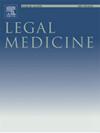Alteration of bronchiolar club cells and pneumocytes as markers of fatal pulmonary toxicity from systemic agents: Considerations on a group of autopsy samples
IF 1.4
4区 医学
Q3 MEDICINE, LEGAL
引用次数: 0
Abstract
Introduction
Club cells and pneumocytes may undergo qualitative and quantitative modifications when lungs are damaged and the modifications of these cells when the body is involved in systemic toxicity, thus when lung is not the target organ, may be an interesting challenge. Therefore, crucial information may be provided by the investigation of the feasibility of possible markers of lung damage in case of intoxication by different substances.
Methods
For this reason, the study aimed at assessing the histological changes of club cells and type I-II pneumocytes in 85 cases of acute poisoning by exogenous substances, whilst controls were 50 cases of death related to non-toxic causes. A total of 405 histological thin sections were analyzed after staining with hematoxylin-eosin, Masson’s trichrome and Periodic acid–Schiff (PAS).
Results
The results showed a numerical variation of club cells and type I and type II pneumocytes depending on the toxic agent examined.
Conclusion
It is therefore possible to ascribe to this kind of bronchiolar cells a detoxifying effect, capable of detecting lung injuries in an early stage and which may represent a marker (although not specific for the substance) even when lungs are not directly involved among a systemic toxic mechanism.
细支气管俱乐部细胞和肺细胞的改变作为全身药物致死性肺毒性的标志物:对一组尸检样本的考虑
当肺部受损时,俱乐部细胞和肺细胞可能会发生定性和定量的改变,而当身体涉及全身毒性时,当肺不是靶器官时,这些细胞的改变可能是一个有趣的挑战。因此,在不同物质中毒的情况下,通过研究可能的肺损伤标志物的可行性,可以提供关键信息。方法本研究对85例外源性物质急性中毒患者的俱乐部细胞和I-II型肺细胞的组织学变化进行了分析,并以50例非毒性死亡为对照。采用苏木精-伊红染色、马松三色染色和周期性酸-希夫(PAS)染色,对405张组织学切片进行分析。结果俱乐部细胞和I型和II型肺细胞的数值随毒性物质的不同而变化。因此,有可能将这种细支气管细胞归因于一种解毒作用,能够在早期发现肺损伤,即使肺不直接参与系统性毒性机制,也可能代表一种标志物(尽管不是特定于该物质)。
本文章由计算机程序翻译,如有差异,请以英文原文为准。
求助全文
约1分钟内获得全文
求助全文
来源期刊

Legal Medicine
Nursing-Issues, Ethics and Legal Aspects
CiteScore
2.80
自引率
6.70%
发文量
119
审稿时长
7.9 weeks
期刊介绍:
Legal Medicine provides an international forum for the publication of original articles, reviews and correspondence on subjects that cover practical and theoretical areas of interest relating to the wide range of legal medicine.
Subjects covered include forensic pathology, toxicology, odontology, anthropology, criminalistics, immunochemistry, hemogenetics and forensic aspects of biological science with emphasis on DNA analysis and molecular biology. Submissions dealing with medicolegal problems such as malpractice, insurance, child abuse or ethics in medical practice are also acceptable.
 求助内容:
求助内容: 应助结果提醒方式:
应助结果提醒方式:


